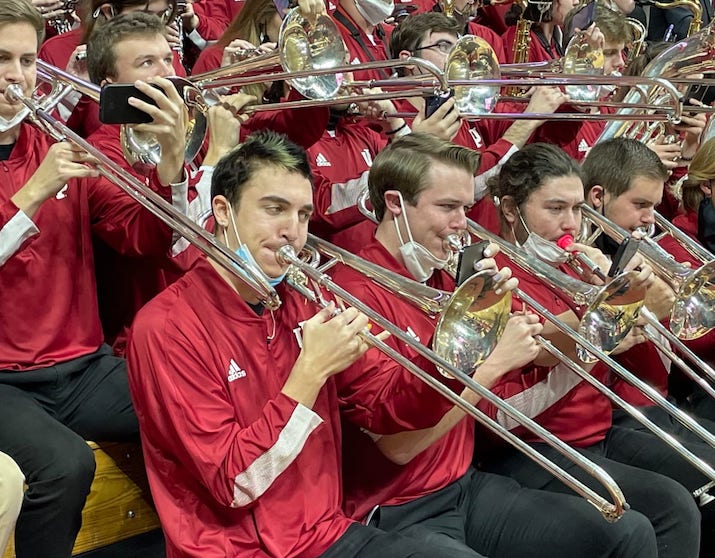March Madness 2022: Without Player Mics, Audio Team Turns to Traditional Basketball Effects Capture
NCAA prohibits wiring athletes and coaches, using contact mics on the court
Story Highlights
The pro leagues have embraced miked-up players for broadcast, but collegiate leagues have largely taken a pass on the technique, including for the NCAA’s March Madness month of matches. Even though student-athletes in all three NCAA divisions can get now paid for the use of their name, image, and likeness, they still can’t get wired for sound on television.
That could put college games at a sonic disadvantage, and that’s what Dave Grundtvig, who is handling sound design and A1 duties for Turner Sports for the NCAA Men’s Basketball Tournament, and his crew have worked to remedy. Unable to position microphones either on players or near the coaches or the scorers tables, they have to rely on other techniques to pick up the excitement of this iconic series of games.
Grundtvig says that, without the microphones near the tables and without being able to wire the various courts with contact mics — a technique he pioneered for the NBA’s COVID “bubble” in Orlando in 2020 — he’s relying mostly on conventional basketball effects-capture approaches. Multiple lavalier mics are located on the backboards and stanchions, and shotguns are aimed to pick up the sneaker squeaks around three-pointers.
But much of the soundscape will comprise the arena ambience, especially the college bands and what everyone hopes will be full grandstands.
“The NCAA is very protective of the players and coaches,” he notes. “That being said, there are restrictions as to where we can put mics on the floor. So my focus is capturing the experience and energy and excitement in the venue: the bands, cheerleaders, and, of course, the fans. It’s mostly just the basic basketball setup at that point. There really are no work-arounds for that.”
Bring on the Bands
For the bands behind the baskets, Grundtvig, working with RF specialist Victor Victoria and court-effects mixer Dave Bjornson, looks to the upper shelves of his microphone closet. He’s deploying a Shure KSM32 large-diaphragm cardioid condenser microphone flanked by a pair of Neumann small-diaphragm condenser microphones at each end of the court to pick the music up out of the crowd sound as discretely as possible. These mics have their own place on his router, enabling them to be recalled, in stereo in the left and right L-C-R channels of the 5.1-surround broadcasts, for replays going into breaks.
“It’s like college football,” Grundtvig explains. “The school bands define college basketball, so you want to keep them out there as part of the signature sound.”
The crowd fills the surround channels, and he deploys a few additional microphones for that, their locations determined in conjunction with the field producer and the league. But, he says, with most of the games played in NBA arenas, the necessary volume is built into the venue.
Grundtvig notes that 85% of second-round games will be in NBA arenas: “They’re big, and they’re gonna be loud.”
The flip side of that, though, is the battle with the PA volume, a situation he says has become endemic to almost all sports.
“All these venues want to create an in-arena experience for the fans sitting in the seats,” he says, adding, “Sometimes their [sound perspective] and mine, which is millions of people watching at home, are not in the same ballpark, no pun intended. With all professional sports now, it seems like we’re always fighting the PA.”
What does help is that arenas are installing upgraded PA systems that can produce extremely precise coverage of specific areas, mostly the stands. In fact, some PA systems are designed to help keep PA sound out of the broadcast microphones.
“For example,” Grundtvig explains, “Jeff McGinnis, who runs the PA in the American Airlines Center, will duck the PA in the cabinet hanging from the scoreboard. That’s literally right at our announcer table, and it makes all the difference in the world. Other [venues] do similar things where they can manipulate a cabinet or two so they’re not blasting right down on your announcer mic. Having the luxury of a well-tuned room and the flexibility of turning certain speakers on or off or adjusting their gain in certain arrays certainly helps.”
March Madness sound has plenty of nuance, but mostly, says Grundtvig, it captures the excitement unique to college sports. “It’s just a fun time of year, and the beauty of it is, hopefully, we’re getting back to normal in these arenas.”

